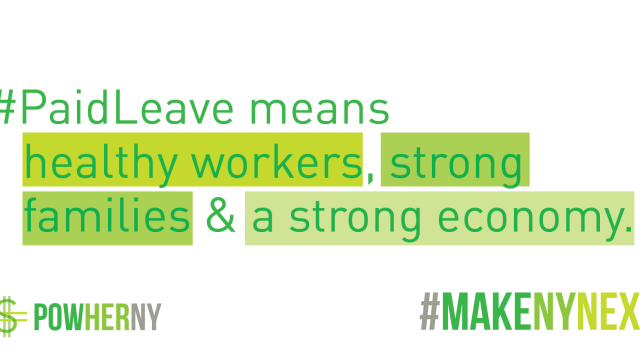Paid Family Leave is in the headlines, especially in states like New York which are considering expanding this workers’ benefit. Paid time off to care for sick loved ones, children and newborn babies is crucial to having both healthy families and workplaces. How much do you know about Paid Leave policies?
1. Only 13 percent of workers in the United States have access to paid family leave through their employers. (National Partnership for Women and Families)
2. California, Rhode Island, Washington, and New Jersey– and the District of Columbia have laws that provide paid family leave for employees who need time off to care for sick or disabled family members or a new child. (A Better Balance)
3. 169 out of 173 countries offer paid leave for new mothers, and 98 of those countries offer at least 14 weeks of paid leave. The United States is one of the four countries that does not guarantee any paid time off, along with Liberia, Papua New Guinea, and Swaziland. (AAUW)
4. Having a baby is a leading cause of “poverty spells” in the U.S. — when income dips below what’s needed for basic living expenses. (Moms Rising)
5. 120,000 women gave birth in New York City in 2013. Most (57.5 percent) were employed during their pregnancies, and of those who were working over half (52.1 percent) were back on the job within months and another 18 percent said they would be returning to work. (Community Service Society)
6. Care for elderly relatives is an increasingly prevalent responsibility for working people. According to a recent national survey, 21% of the adult working population regularly provides care to another adult. (Time to Care/ Paid Family Leave Insurance Campaign)
7. Paid time off can help employers too, by reducing costly turnover. For example, parents of newborns or newly adopted children who are able to take time off to care for their infants are more likely to return to their initial employer. (Time to Care/ Paid Family Leave Insurance Campaign)
8. Under the proposed Paid Family Leave Insurance Act first year benefits are equal to two-thirds of a worker’s wage capped at a maximum of 35% of the statewide average weekly wage. The next year the cap increases to 40% of the statewide average weekly wage, then to 45% in the third year, and to 50% in year four. The 2013 statewide average weekly wage was $1,212.98. (Time to Care/ Paid Family Leave Insurance Campaign)


